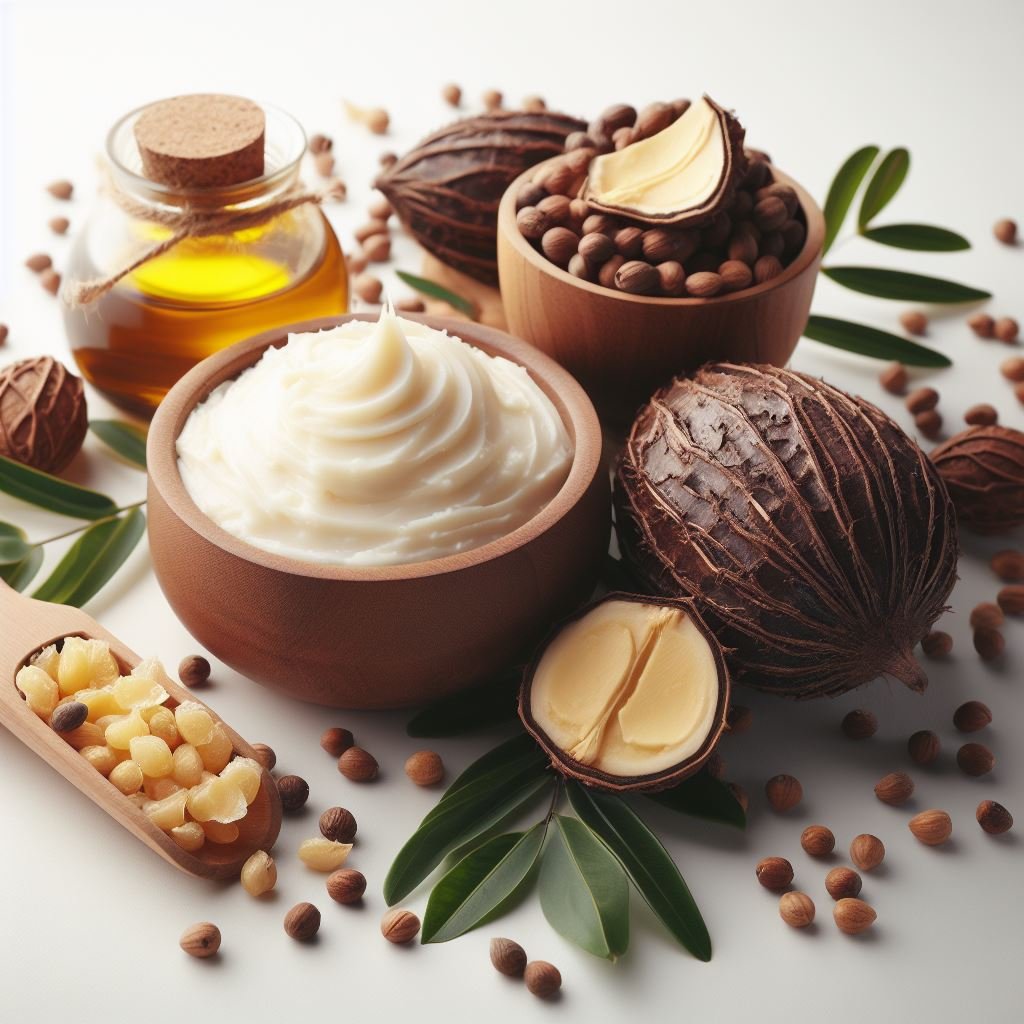“Discover the natural wonders of Natural shea butter, a skincare powerhouse derived from the seeds of the African shea tree. Packed with vitamins E and A, along with antioxidants, shea butter provides deep hydration, reduces inflammation, and promotes skin elasticity. Embrace the benefits of this natural treasure for a radiant and healthy complexion. Learn how to incorporate shea butter into your skincare routine and explore its transformative effects on your skin, leaving it nourished and glowing.”
What Is Shea Butter?
• The Shea tree, known as the “Tree of Life” due to its ability to address numerous skin, hair, and health conditions, has earned a nickname. “Nature’s Hair Conditioner” is another alias bestowed upon this marvel Butter for its exceptional moisturizing and softening properties.
• Natural Shea Butter is derived from the seeds of the Shea Tree’s fruits.
• When topically applied, this miracle Butter nourishes the skin, enhancing its clarity and addressing issues such as dryness, spots, dark patches, discoloration, cracks, and wrinkles without clogging pores.
• Used in hair care, it moisturizes and nourishes from root to tip, protecting against dryness and brittleness while repairing without leaving residue.
• In massages, Natural Shea Butter Oil supports skin elasticity and flexibility, increases collagen production, promotes cell renewal, and enhances circulation.
• Shea Butter prevents the retention of bacteria causing irritation and acne, relieves nasal congestion, creates a barrier protecting the skin from harsh environmental factors, and facilitates easy maintenance.
CULTIVATION AND HARVESTING OF QUALITY SHEA BUTTER
Shea trees are native to the Savanna regions of West Africa, where approximately 500 million of them grow wild from Senegal to Sudan. Despite efforts to cultivate the tree in other regions, these attempts have so far been unsuccessful. Shea trees typically begin producing large, green, plum-like fruits when they are 10 to 15 years old, reaching full bearing potential between the ages of 20 and 50. With a known lifespan of up to 200 years, the tree continues to bear fruit throughout its existence.
Shea trees usually start flowering between February and March, from the end of winter to the beginning of spring. The green fruit matures to a brown color, usually between June and July in the summer months. From this point onwards and entering the fall, Shea fruits naturally fall to the ground, allowing for a manual harvesting system. About 30% of the nuts remain on the ground to germinate and contribute nutrients to the soil. A Shea tree can produce 15-20 kg of fresh Shea fruit, yielding 3-4 kg of dry seeds containing 42-48% fat (butter).
Immature Shea fruits have an outer layer called Epicarp, which is a light green covering protecting the fleshy Mesocarp, also known as Pulp. Most Shea fruits contain one or two seeds, but some may have up to three. These edible, oil-rich seeds are used to produce Shea Butter, recognized as a vegetable oil. In the wild, nuts/seeds continue to be utilized by wind, rain, animals, and humans for the future growth of Shea trees.












naturalthings.shop –
test your products